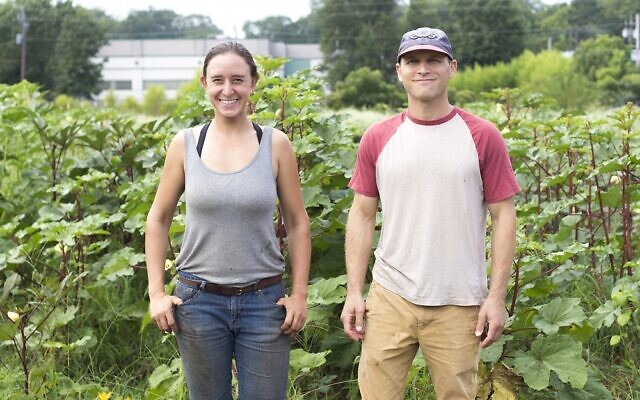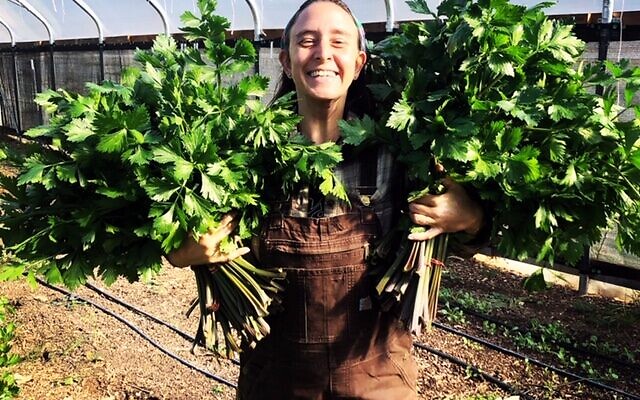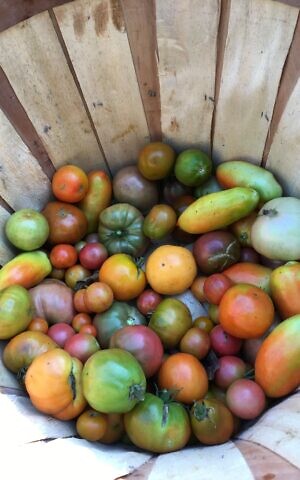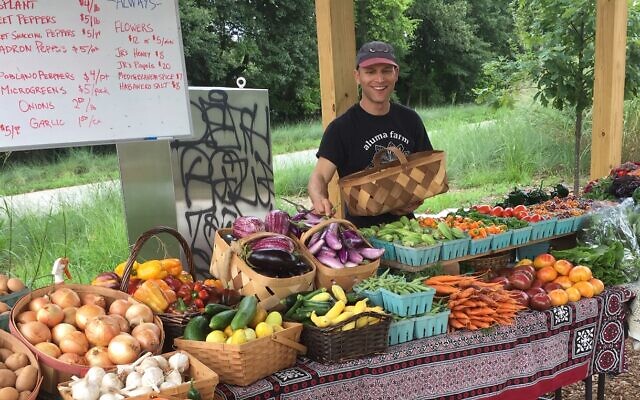Spring Vegetables with Jewish Roots
Horticulturalists share which produce can be grown at this time to be used for the seder plate.
As vegetables are harvested and flowers begin to blossom, it is evident that spring is suffusing on time to fill our Passover seder plate with the appropriate vegetables symbolizing various parts of the Exodus story.
Some of these spring vegetables are a reflection of the Jewish agrarian calendar, a calendar that defines the agricultural connection to nature and the land. The Jewish people have a strong agricultural background as seen through the three main pilgrimage festivals: Sukkot, Shavuot and Pesach.
So, what are those vegetables that grow around the time of Passover, or Chag Ha’Aviv? The AJT spoke to a few horticulturists with expansive knowledge of gardening.

“In Atlanta, we start planting spring vegetables such as broccoli, cauliflower, kale, swiss chard, variety of lettuces, radish, beets and turnips,” said Wendy Kohn, a Central Fulton Master Gardener. She explained that the agrarian calendar coincides with Passover. “I think the foods we eat during Jewish holidays are in direct relation to what is available from the garden.”
As we prepare to set the seder plate that represents our enslavement, a few of these spring vegetables are included. Maror, which can be horseradish, lettuce, endives and even radish mix (chazeret), symbolizes the bitter times in Egypt as slaves. Karpas, which can be either celery or parsley, symbolizes spring, and the haroseth represents the mortar slaves used for bricklaying.
“Much of the Passover seder focuses on fruits of the soil and points us towards the significance of the land from which the vegetables arise and cultivates in us is a deep appreciation for land. Our identity is connected to the foods we eat,” said Rabbi Ellen Bernstein, a pioneer in the Jewish environmental movement who has appeared in Atlanta. Her Passover haggadah, published last year, links the biblical story of Exodus with the environmental teachings about the creation of the world in Genesis.

Aluma Farm near the Atlanta BeltLine grows about 100 varieties of vegetables annually, said co-owner Andy Friedberg. He stressed the nutritional benefits of vegetables. “When you farm and/or eat seasonally, you connect with the cycles of the year in an intimate way.”
His mentor once told him that each season carries unique ties to the function of nature, Friedberg said. “Winter is a time of dormancy, a time to rest, plan and subsist on things like root veggies and cabbage. Spring is a time of rebirth and hope. With trees budding and flowers emerging, farmers are beginning to work the soil and start new seeds with the promise of new growth and fresh vegetables.”

Friedberg said he believes fresh produce aligns with the seasons. “The spring vegetables are unique in that they generally thrive in times when our bodies are craving fresh, green produce to cleanse our bodies of heavy winter foods and a more sedentary lifestyle. They are detoxifying and full of nutrients that our bodies need to feel and perform their best.”
In the same way, festivals in the Jewish calendar stem from our agricultural roots. Shavuot, (Chag Ha’Katzir) for instance, represents the beginning of the harvest, the first fruits of the season and the time to pick wheat and barley.
Friedberg concurs, “The seasons tie into the Jewish calendar in as much as the harvest festivals are marked by harvests.
“Farming through the seasons, one naturally gets tied into the rhythms and cycles of nature and the connection to the awe and the mystery of something bigger than ourselves.”




comments